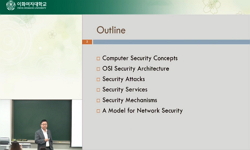수요응답형 교통(Demand Responsive Transport, 이하 DRT)은 고정된 노선 경로나 운행계획표 없이 이용자의 수요가 발생했을 때 대응하여 운행하는 교통체계로 비수익 노선에서 효율적으로 운행할 수...
http://chineseinput.net/에서 pinyin(병음)방식으로 중국어를 변환할 수 있습니다.
변환된 중국어를 복사하여 사용하시면 됩니다.
- 中文 을 입력하시려면 zhongwen을 입력하시고 space를누르시면됩니다.
- 北京 을 입력하시려면 beijing을 입력하시고 space를 누르시면 됩니다.
https://www.riss.kr/link?id=A108179936
- 저자
- 발행기관
- 학술지명
- 권호사항
-
발행연도
2022
-
작성언어
Korean
- 주제어
-
KDC
53
-
등재정보
KCI우수등재
-
자료형태
학술저널
- 발행기관 URL
-
수록면
289-304(16쪽)
- 제공처
- 소장기관
-
0
상세조회 -
0
다운로드
부가정보
국문 초록 (Abstract)
수요응답형 교통(Demand Responsive Transport, 이하 DRT)은 고정된 노선 경로나 운행계획표 없이 이용자의 수요가 발생했을 때 대응하여 운행하는 교통체계로 비수익 노선에서 효율적으로 운행할 수 있으며, 코로나-19가 확산된 판데믹 상황에서 기존 대중교통과 비교하여 회복탄력적인 교통수단으로 각광 받고 있다. 그럼에도 불구하고 무분별한 DRT 도입은 운행비용과 중복 노선을 증가시키며, 또한 기존 연구의 도입 논의지역은 국내에 대체로 존재하는 도농복합도시에 적용하기 어려운 한계점이 존재한다. 따라서 본 연구는 이를 해소하고자 DRT 도입 여부 및 유형과 DRT 운영을 위한 공간적 패턴 분석을 수행하였다. 이를 위하여 경기도 남양주시를 대상으로 Hierarchical Clustering을 통해 DRT 도입 유형을 정의하고 K-Means Clustering을 통해 평일 승하차량을 기반으로 승, 하차 클러스터를 규정한 후, DBSCAN Clustering을 통해 유사한 특성의 정류장이 밀집된 클러스터를 도출하여 공간적인 특성을 분석하였다. 분석 결과, 남양주시 소 생활권 간 운행노선을 첨두 DRT, 노선확충형 DRT, 노선대체형 DRT 등 3가지 노선과 DRT 미도입으로 정의하고 주요시간대 별 공간적인 패턴을 확인하였다. 이를 통하여 도시 및 시가화 지역에는 첨두DRT, 노선대체형 DRT 혹은 DRT 미도입이 적절하며 통근, 통학 및 환승통행을 수행해야 하며, 농촌 지역에는 노선확충형 DRT를 도입하는 것이 적절하고 지역중심으로의 통행을 제안하였다. 본 연구는 DRT 유형에 대해 세분화하여 제안하였기에 국내 다수 존재하는 도농복합도시에서 DRT 도입을 위한 기초자료로 활용할 수 있다.
다국어 초록 (Multilingual Abstract)
Demand Responsive Transport (DRT) is a transport system that manages in response to user demand without fixed routes and plans. Compared to the existing public transport, which has fixed routes, it is highlighted as an effective transport system in no...
Demand Responsive Transport (DRT) is a transport system that manages in response to user demand without fixed routes and plans. Compared to the existing public transport, which has fixed routes, it is highlighted as an effective transport system in non-profit routes and resilient in pandemics by covid-19. However, the indiscriminate introduction of DRT causes operation costs to be higher and routes to overlap. Furthermore, related works have limitations that it is difficult to apply to the mixed area between the rural and urban areas which generally exist in South Korea. Therefore, we analyze DRT types for each route and spatial patterns for DRT operation. Inspecting Namyangju, South Korea, we re-define DRT types through hierarchical clustering and analyze spatial features using DBSCAN clustering after determining board-alight clusters by k-means clustering. As a result, we not only define an inter-neighborhood route as peak DRT, complementary DRT, alternative DRT, and needless a DRT but find a spatial pattern of time zone. It is appropriate to introduce peak DRT and alternative DRT or needless a DRT for commuting and transferring in urban and suburban. Whereas in rural areas, it is apposite to adopt the complementary DRT for feeder service. It may be utilized as data in the rural-urban mixed areas located in South Korea.
목차 (Table of Contents)
- Abstract
- 초록
- 서론
- 선행연구
- 분석 방법론
- Abstract
- 초록
- 서론
- 선행연구
- 분석 방법론
- 분석 과정 및 결과
- 결론
- References
동일학술지(권/호) 다른 논문
-
- 대한교통학회
- 최종해(CHOI, Jong Hae)
- 2022
- KCI우수등재
-
비연소 배출특성을 활용한 탄소중립시대의 자동차세 개선방안 연구: 자동차 보유세를 중심으로
- 대한교통학회
- 장재민(JANG, Jaemin)
- 2022
- KCI우수등재
-
시뮬레이션을 이용한 해상교차로 혼잡도에 관한 기초 연구: 부산항 신항 주의해역의 교차 선박을 중심으로
- 대한교통학회
- 박상원(PARK, Sangwon)
- 2022
- KCI우수등재
-
수요응답교통서비스가 이용자의 활동성에 미치는 효과: 지역 간 차이 실증분석
- 대한교통학회
- 김원철(KIM, Wonchul)
- 2022
- KCI우수등재





 DBpia
DBpia







